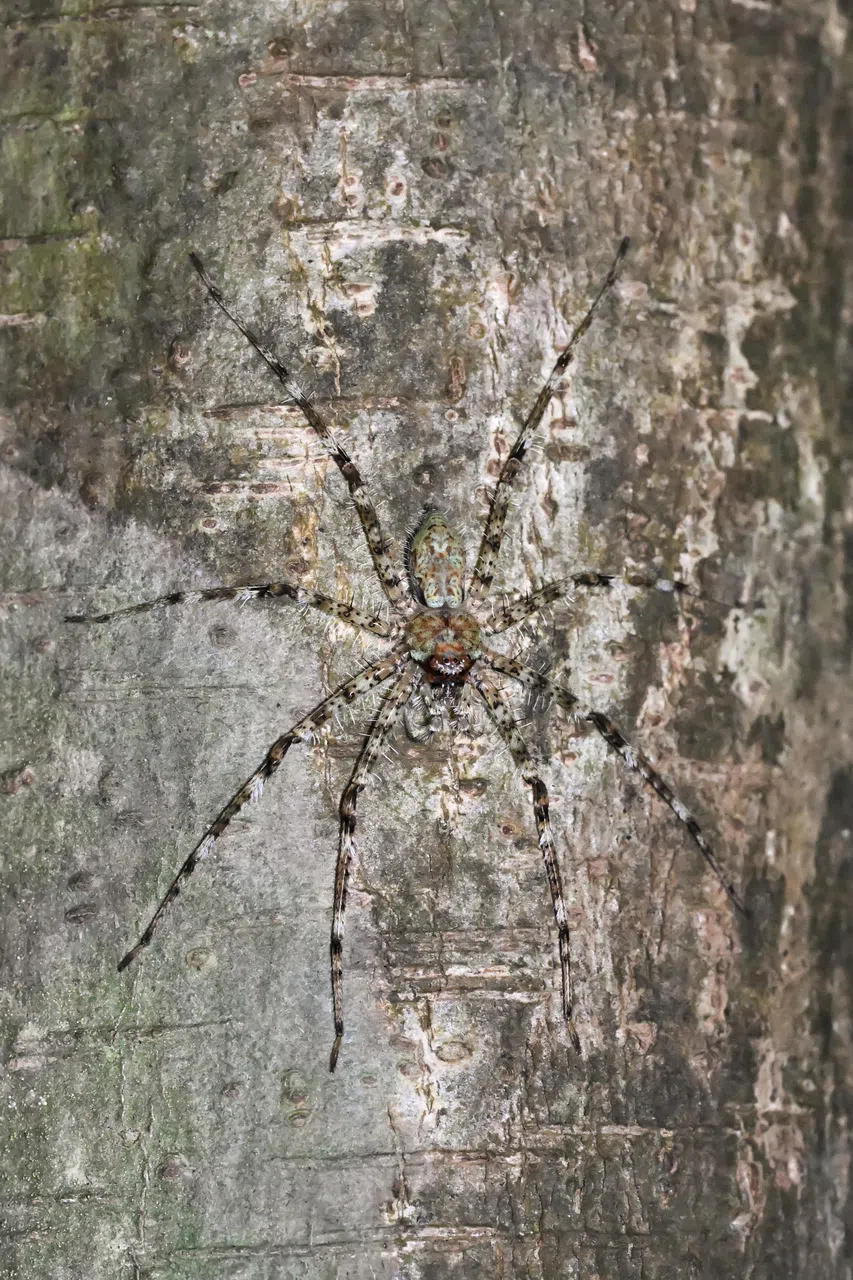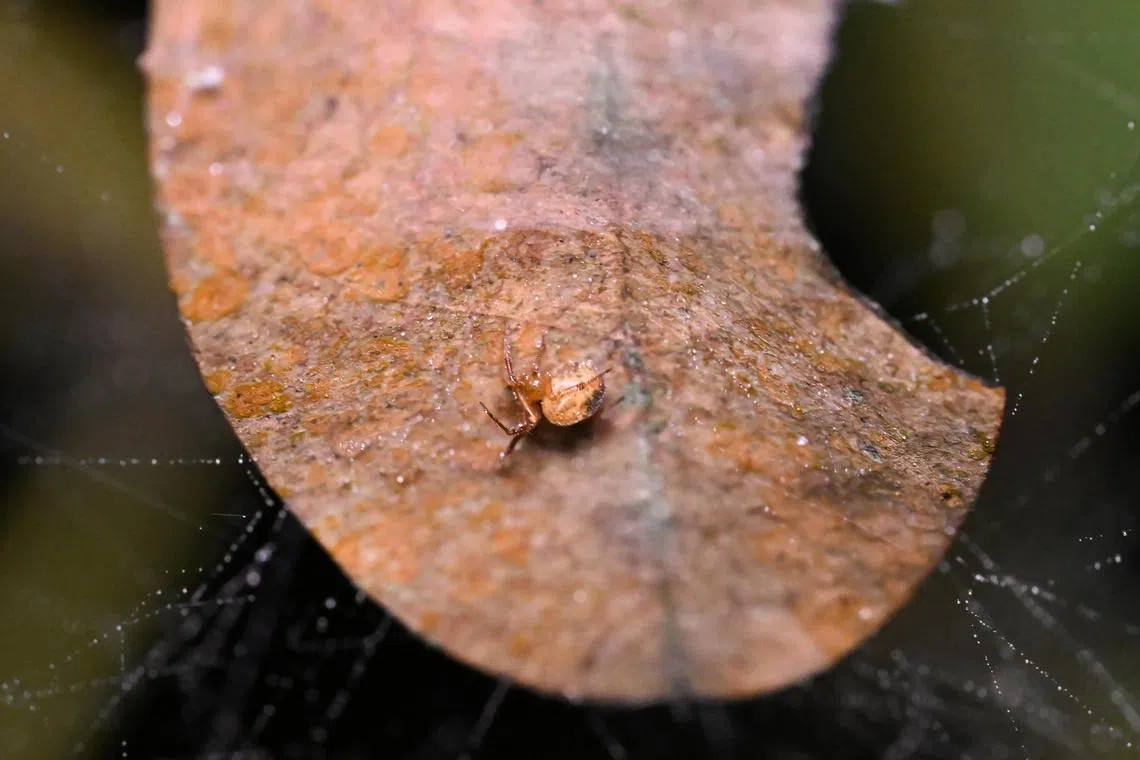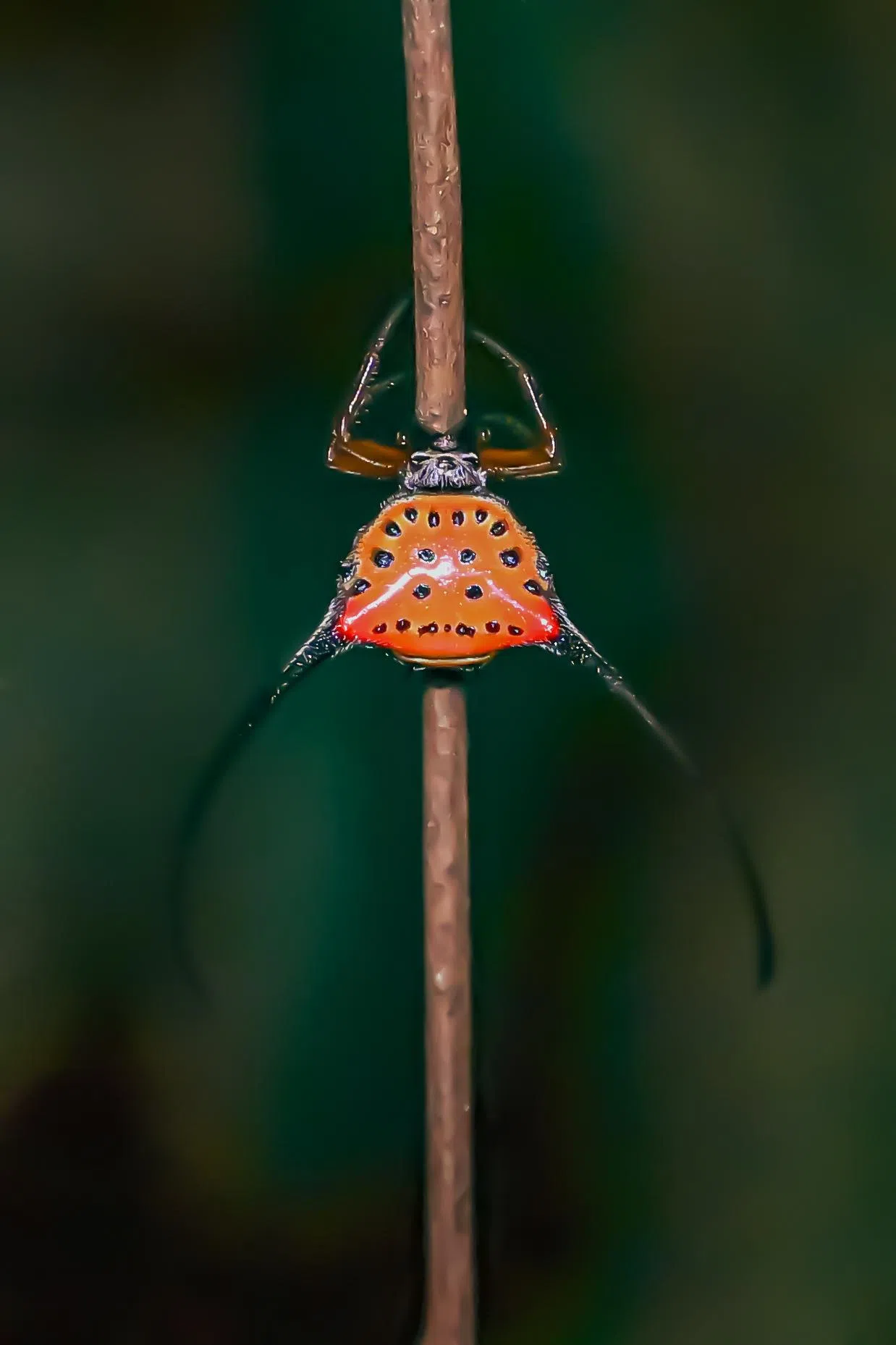On the ground at night with Singapore’s Spider-men
Sign up now: Get ST's newsletters delivered to your inbox
Follow topic:
SINGAPORE - We turned our headlamps towards the mute darkness of the forest and swept the warm fluorescent beam across the ground.
As our searchlights lifted the forest floor from anonymity, specks of orange, green and blue light twinkled like stars on the ground.
Spider eyes.
“Spiders’ eyes shine in the dark because of a phenomenon called eyeshine and this happens because of a layer of cells behind the retina that reflects light back through the retina,” retired ambassador and spider expert Joseph Koh informed us.
Most nocturnal animals have eyeshine, as this reflection of light through their eyes for a second time allows them to see better in the dark, said Mr Koh, 74. Some spiders that hunt without webs are more dependent on such night vision.
On a Friday night in April, The Straits Times joined Mr Koh, his wife Koh Peifen and fellow spider enthusiast Chris Ang for a night walk near a forest fringing a public carpark in Springleaf, to learn how amateurs can search for spiders.

A common lichen huntsman spider (Pandercetes sp) flattens itself against trees, its green splotches helping it blend with moss-like lichen growing on the trunk.
ST PHOTO: LIM YAOHUI
This lichen huntsman spider is one example, said Mr Koh, as he shone a torch onto a nearby tree trunk and into a spider’s eight eyes that returned a brilliant emerald glow.
“Huntsmen spiders are the spiders with one of the brightest eyeshine because they need good eyesight to catch their prey,” he said.
As he pulled the light away from the spider, its body seemingly dissolved into the mossy bark of the tree.
“Without these lights, these spiders may totally evade our detection.”
Different spiders have eyeshine of varying colours, said Mr Koh. For instance, wolf spiders tend to have blue eyeshine while the eyeshine of huntsman spiders can be orange, red or green, depending on the species.
Many of the roughly 900 spider species in Singapore are nocturnal, so the best time to catch spiders in action is at night, said Mr Ang, a nature photographer who co-authored a book on Singapore spiders with Mr Koh and two others.
Crouching under a hallway of silver webs between the trees, the 57-year-old points out that all of this silk infrastructure is built overnight.
Mr Ang said: “Spiders of the forest start spinning their webs at night and eat their own silk during the day... They do this to hide from predators.”
He added: “In the day, they hide under leaves or in shelters they construct with leaves, which makes them harder to spot.”
Spinning a web is akin to a single person building a multi-storey building. About 40 per cent of spiders in Singapore repeat this Sisyphean construction each night.
Every spider manages its web differently, said Mr Koh, and this is another key way to identify them.
For instance, the spiny-legged orb weaver builds its web across trees in order to net flying insects.
It then hides in a leafy shelter that hangs at the corner of its web like a sentry post and only returns to the web if it senses the movement of prey struggling in its silk.

A spiny-legged orb weaver (Neoscona sp) spider creates a vertical web by nightfall to intercept traffic flying horizontally.
ST PHOTO: LIM YAOHUI
Other spiders, like the comb-footed spider, live in three-dimensional webs that hang like tents suspended from the wrists of leaves of shrubs or trees.
Mr Koh said: “The anchoring lines hold up the weight of the ‘tent’ and the way that some of these constructions are hung make them look like the safety nets for circus acrobats.”

A web made by what is believed to be a T-motif comb-footed spider (Theridion t-notatum) sitting on a leaf.
ST PHOTO: LIM YAOHUI
But beyond their variety and beauty, spiders are an often overlooked indicator species for the health of a forest as they are sensitive to changes in their woodland habitat’s structure and composition, said Mr Koh.
Spiders are an important predator in the forest ecosystem, and a drop in their populations can indicate declines in insect populations and point towards increased plant damage.
Rare spiders, like the long-horned spider, is one such example. Its presence indicates a healthy forest.
“This spider used to only be found in Nee Soon camp, and in the old days, they were nowhere else except Bukit Timah Nature Reserve,” said Mr Koh.

A long-horned spider (Macracantha arcuata) is a kind of orb-weaver spider.
ST PHOTO: LIM YAOHUI
That the long-horned spider has been spotted in recent years in the forested area we were in “shows a good quality forest that is shady, with a thick canopy, and very rich with prey”.
As Singapore looks to develop more green spaces to meet its growing land use needs, the nation should not only protect its nature reserves, but try its best to avoid woodland areas with flora and fauna unique to the island, he said.
Part of his and his wife’s post-retirement mission is to involve more young people in field trips and biodiversity surveys so that they can see for themselves the “bewildering” range of plants and animals in Singapore, Mr Koh added.
After Mrs Koh, 74, a former Singtel marketing director, took down the contact details of a secondary school student who had joined our night walk in the spur of the moment, out of curiosity, Mr Koh mused: “It’s very encouraging to see young men like him. Because once you learn more about nature, you will value its preservation.”
Those interested in learning more about the spiders of Singapore can
sign up for a free talk on May 28
by Mr Koh entitled Discovering Singapore’s Spider Diversity, which will be held at Heartbeat@Bedok or online via Zoom.


